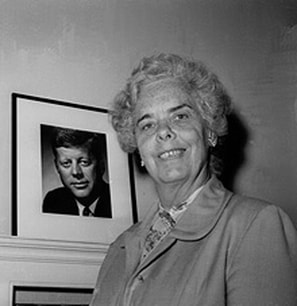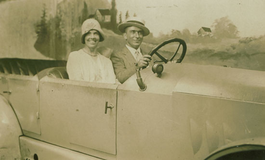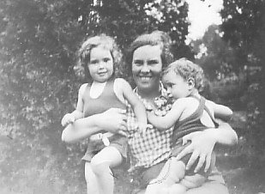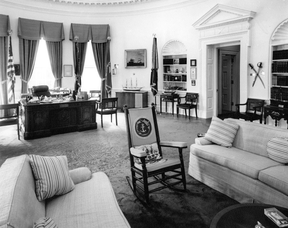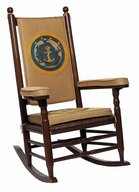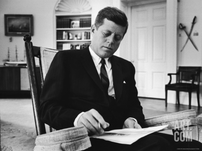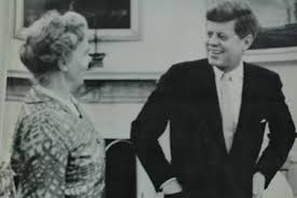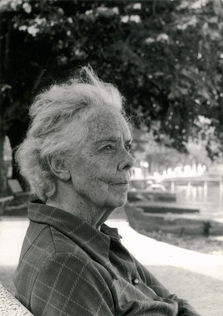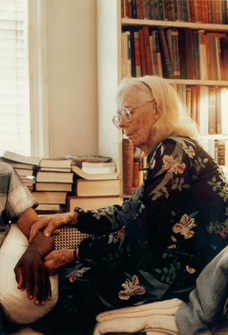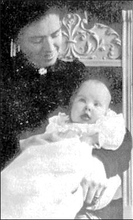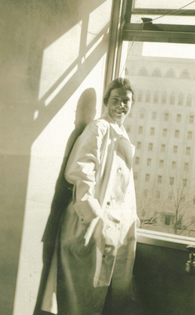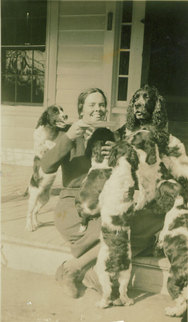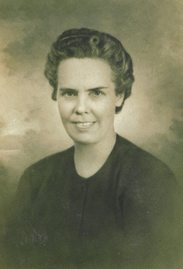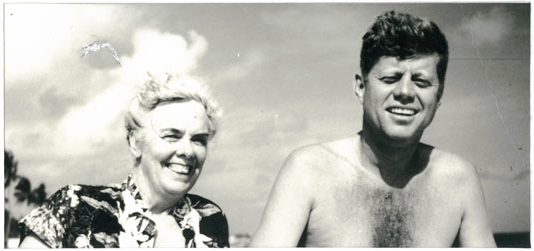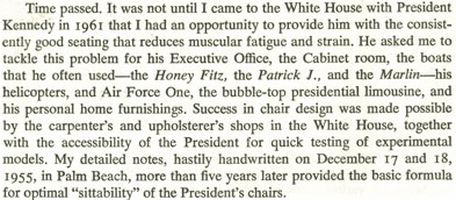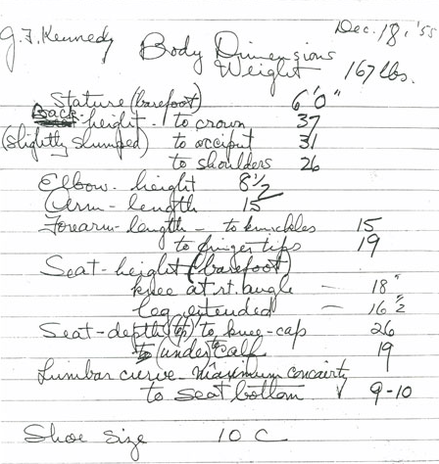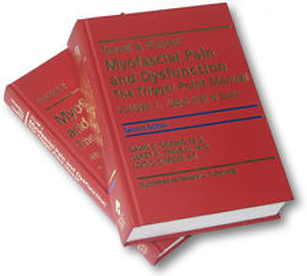HISTORY OF MYOTHERAPY
|
DR JANET TRAVELL (1901-1997)
Dr Janet Travell has made many discoveries in trigger points, myofascial pain (pain and dysfunction of skeletal muscles), and treatment techniques that has benefited many.
Dr Travell was many things including a physician, scientist, researcher, pioneer, teacher, poet, author, athlete, friend, wife, mother, grandmother, and a student of life. What you may not have known, is that Dr Travell also treated the chronic back pain of President John F Kennedy. Kennedy himself described Dr Travell, the first woman to hold the position as the White House physician, as a "medical genius". A BRIEF MEDICAL HISTORY OF JOHN F KENNEDY Before delving more into Dr Janet Travell, we've decided to provide you with some background medical information you may not have known about Kennedy. Understanding the following will provide you with some context into the life events of Dr Travell, and why she and Kennedy crossed paths. |
Recently, it has been thought that Kennedy was born with an autoimmune disease (Schmidt's Syndrome). Typically, with such a disorder, the pain is suffered during adolescent and adult years. At the age of 23, it was discovered that Kennedy had a slipped disc and he suffered severe back pain as a result. He then suffered from three fractured vertebrae around the ages of 23 to 27 while osteoporosis of the spine started to develop. Kennedy had his first spine surgery at the age of 27 and was formally diagnosed with osteoporosis at this time.
As if that weren't enough, Kennedy was then diagnosed with Addison's Disease at the age of 30. Compression fractures of his lower spine were discovered by x-rays at around the ages of 33 to 34, and his second spine surgery was conducted after an x-ray showed his fifth lumbar vertebrae had collapsed around the age of 37 or 38. This surgery included a lumbo sacra fusion with a sacroiliac fusion in hope that these would strengthen his lower spine. Unfortunately, his pain was exacerbated post-surgery due to infectious complications and he was hospitalised for nine months afterwards. Further surgery was administered four months later to remove the metal plate that had previously been inserted into Kennedy's spine.
Despite all he went through, Kennedy was feeling no relief from his back pain and continued to suffer to the point where he could not move without experiencing strain or pain (this included bending, sitting, and turning over in bed). Kennedy was in such severe back pain that he was consuming as many at eight different medications a day to manage his pain.
It wasn't until Kennedy met Dr Travell where he started to feel some relief. He was 38 years of age in 1955 when he met with Dr Janet Travell. To find out what happened next, read through the timeline of Dr Janet Travell's life below.
Click here for 'John F Kennedy's Pain Story' which has more detail about his medical background, including definitions to assist in your understanding.
A TIMELINES OF DR JANET TRAVELL'S LIFE EVENTS
Discover more about Dr Travell's main life events and dealings with Kennedy by taking a look through her timeline below. Because we are largely interested in Dr Travell's life as a professional, we have generally focused on this component of her journey.
As if that weren't enough, Kennedy was then diagnosed with Addison's Disease at the age of 30. Compression fractures of his lower spine were discovered by x-rays at around the ages of 33 to 34, and his second spine surgery was conducted after an x-ray showed his fifth lumbar vertebrae had collapsed around the age of 37 or 38. This surgery included a lumbo sacra fusion with a sacroiliac fusion in hope that these would strengthen his lower spine. Unfortunately, his pain was exacerbated post-surgery due to infectious complications and he was hospitalised for nine months afterwards. Further surgery was administered four months later to remove the metal plate that had previously been inserted into Kennedy's spine.
Despite all he went through, Kennedy was feeling no relief from his back pain and continued to suffer to the point where he could not move without experiencing strain or pain (this included bending, sitting, and turning over in bed). Kennedy was in such severe back pain that he was consuming as many at eight different medications a day to manage his pain.
It wasn't until Kennedy met Dr Travell where he started to feel some relief. He was 38 years of age in 1955 when he met with Dr Janet Travell. To find out what happened next, read through the timeline of Dr Janet Travell's life below.
Click here for 'John F Kennedy's Pain Story' which has more detail about his medical background, including definitions to assist in your understanding.
A TIMELINES OF DR JANET TRAVELL'S LIFE EVENTS
Discover more about Dr Travell's main life events and dealings with Kennedy by taking a look through her timeline below. Because we are largely interested in Dr Travell's life as a professional, we have generally focused on this component of her journey.
|
1929 - Dr Travell married Mr John Powell, who was an investment counsellor. Together, Mr Powell and Dr Travell had two daughters (Janet and Virginia). Their marriage lasted until 1973 when Mr Powell passed away. In this same year, working toward her goal of being a cardiologist, Dr Travell assisted in a clinical research project searching for treatment options for lobar pneumonia at Bellevue Hospital. 1931 - To acknowledge her participation and the importance of her research, the Cornell University Medical College awarded Dr Travell an instructorship. Consequently, she returned back to the medical college to commence working as an instructor in the Department of Pharmacology. She then worked her way up the professional ladder to associate professor of Clinical Pharmacology. From this point onwards, Dr Travell stayed at the medical college for another 30 years.
1936 - Dr Travell began functioning as a visiting cardiologist for nine years from this point. During this time, with the acceptance of a fellowship grant, she studied arterial disease from 1939 until 1941.
1941 - It wasn't until the late 30s, early 40s, where Dr Travell became highly interested in skeletal muscle pain. After spending time working as a cardiologist, she specialised in the relief of musculoskeletal pain when she moved into the field of orthopaedic medicine. From this interest, Dr Travell developed a method for treating painful muscle spasms by creating a new anesthetic which is widely used and recognised in sports medicine today (local procaine injection and vapocoolant sprays such as ethyl chloride). Little did she know that this discovery would alter her life from this point onwards. 1942 - Dr Travell's first published research article appeared this year. Subsequently, many more of her research articles were published in a range of medical journals (she ended up being the author of more than 100 scientific articles!).
1960s - Dr Travell met David Simons when she lectured in Texas. Together they worked on the trigger point manuals.
1960 - Kennedy strongly believed in Dr Travell's work and appointed her to the post of Personal Physician when he was elected president. This meant that Dr Travell was the first woman to hold such a position, and became widely known as a result.
Dr Travell thought at the time that the continuous muscle movements being in a rocking chair (contracting and relaxing), helps lessen lower back tension. And so, she incorporated Kennedy's rocking chair use to successfully relieve his back pain. Consequently, the popularity of the rocking chair boomed once many saw Kennedy pictured sitting in his rocking chair in the Oval Office. Seating was one area which interested Dr Travell. This encouraged her to work with a consultant in seating designs to create tractor and airplane seats to provide further support and comfort for people. 1965 - Up until this point, Dr Travell moved on to serve President Lyndon Johnson after the passing of President Kennedy (as well as other members of the Kennedy family and other Washington politicians.). Many believe that it was Kennedy's chronic back issues that contributed to his death. He was wearing his back brace when he was shot in the neck, which held him upright; unfortunately the perfect target for the second fatal bullet to hit his head.
Dr Travell left the White House in 1965. 1966 - Even though Dr Travell was in her 60s after completion of her time at the White House, this did not stop her from pursuing further professional events in her life. She attended the faculty of the George Washington University School of Medicine and University Hospital as Associate Clinical Professor of Medicine. From this point onwards, she enthusiastically continued teaching and developing her techniques over the next 30 years. She also spent this time writing and lecturing around the country. It was at the George Washington University where she was named professor emeritus in 1988.
|
1901 - Dr Travell was born to Willard and Janet Davidson Travell. Her father, Willard Travell, was a practicing physician for over 60 years, who encouraged and inspired Dr Travell to take on a similar pathway in life. 1922 - Dr Travell graduated from Wellesley College and majored in inorganic chemistry.
1926 - She earned her M.D. from Cornell University Medical College (New York) and was rewarded for the highest scholastic standing during her four years of medical school. For this, she received the John Metcalf Polk Memorial Award.
After her time at College, Dr Travell completed two years of her internship and residency at New York Hospital. During this time, she also assisted the New York City police force by serving as an ambulance surgeon. Dr Travell describes this time to be "really fascinating and valuable" to her medical training. Not long after, she was given the rank of Lieutenant. 1955 - This was the year Dr Travell unexpectedly received a call from Senator John F. Kennedy's orthopedic surgeon (please note: this is how Kennedy was known at this time). Senator John F. Kennedy had sustained a number of injuries in World War II and had suffered through many major back surgeries as a result - all of which he had failed to recover from. Dr Travell first met Kennedy at her New York office, as he presented to her on crutches. He was unable to put weight on his left foot, nor bend his right knee due to muscle spasms from his lower back. Dr Travell incorporated a number of techniques in treating Kennedy, which are described below.
1955 (cont) - Correctly identifying Kennedy's muscular sources of his enduring pain, Dr Travell effectively relieved his ongoing discomfort by injecting her anesthetic (low-level procaine) into the lumbar muscles which relaxed the muscle cramps. Kennedy's strained back was also further alleviated by Dr Travell after she discovered that his left leg was 2.54 cms (1 inch) shorter than the other. She was able to resolve this issue with corrective shoes, using heel lifts for all of his left shoes. It was thought at the time, that Kennedy's political career would be in jeopardy had it not have been for Dr Travell.
Her treatment plan included physical exercises such as use of his rocking chair, muscle stretching and strengthening, and swimming. Other physical measures used, aside from incorporating a heel lift, included use of special chairs, a back brace and corset. She prescribed a number of medications and vitamins which can be found listed by clicking here, where you can also find further details into Dr Travell's treatments with Kennedy. Her treatment plan included physical exercises such as using his rocking chair, swimming, and muscle stretching and strengthening. 1983 - In her 80s, the first volume of Dr Travell's book went to press (co-authored with David Simons); Myofascial Pain & Dysfunction: The Trigger Point Manual. In attempt to perfect the second volume, she took her time publishing the next volume, which wasn't published until she was past the age of 90.
1997 - Dr Janet Travell died at her Northampton home, Massachusetts, at the age of 95 years.
|
Physical treatment for damaged muscles was known simply as ‘soft tissue therapy’ until Bonnie Prudden, an American health and fitness practitioner coined the term ‘Myotherapy’. However, as the above journey suggests, Dr Janet Travell (in conjunction with Dr David Simons and Desmond Tivy), was the pioneering practitioner in the field of Myotherapy in the USA throughout the 1970s. Scientific interest in exploring how the human body functions has existed since the middle of the nineteenth century.
The emergence of Myotherapy as a formally prescribed and effective treatment for myo-fascial pain syndromes, coincided with a consumer demand for less medicalised forms of manual healing practices. Following the identification by Dr Travell and Dr Simons in the 1980s of the neuro-physiological basis of myofascial pain and associated trigger points, Myotherapy gradually gained wider acceptance and credibility as an effective therapeutic modality.
The emergence of Myotherapy as a formally prescribed and effective treatment for myo-fascial pain syndromes, coincided with a consumer demand for less medicalised forms of manual healing practices. Following the identification by Dr Travell and Dr Simons in the 1980s of the neuro-physiological basis of myofascial pain and associated trigger points, Myotherapy gradually gained wider acceptance and credibility as an effective therapeutic modality.
Dr Janet Travell and Dr David Simons' book is still used to this day as a text book (more like "bible") to educate the ambitious minds of many students in various Myotherapy colleges around the world. Dr Travell was known to enthusiastically share her 'pioneering techniques for treating and controlling muscle pain' with a variety of other practitioners and healthcare professionals. It is safe to say, without Dr Travell, Myotherapy would not be as well recognised or accepted as it is today; it is likely to have not even existed without the brilliant mind of Dr Travell.
Gain some inspiration by taking a sneak peak at Dr Janet Travell’s CV, published books and papers, by clicking here.
REFERENCES
Books
Janet Travell and David G Simons. Myofascial Pain and Dysfunction: The Trigger Point Manual, Vols. 1 and 2. Williams and Wilkins: Baltimore (1983)
Brian Tritton. Massage and Myotherapy, 2nd ed. RMIT Publishing: Melbourne (1996)
Online Resources
Please click here for online references.
Books
Janet Travell and David G Simons. Myofascial Pain and Dysfunction: The Trigger Point Manual, Vols. 1 and 2. Williams and Wilkins: Baltimore (1983)
Brian Tritton. Massage and Myotherapy, 2nd ed. RMIT Publishing: Melbourne (1996)
Online Resources
Please click here for online references.

